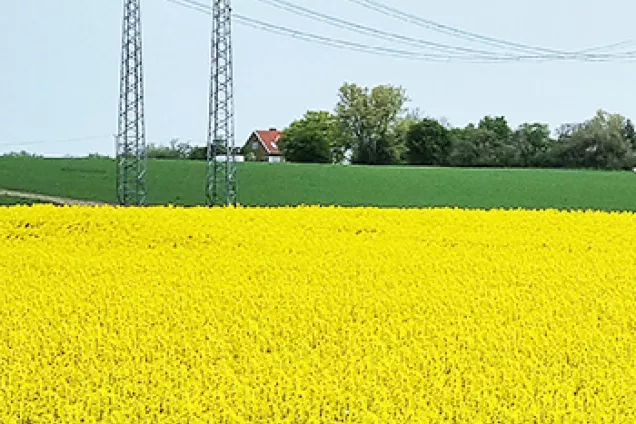Research
Division of Fire Safety Engineering
The research at the Division of Fire Safety Engineering has during the years encompassed the description of the evolution of a fire, human behaviour in the event of fire, extinguishing techniques and extinguishing agents, industrial fire protection systems, design related to fire technology, and community emergency services.
Today the research is focused on the two main areas Fire Development and Human Behaviour in Fire.
Fire Development
Fire development has been an area of research at Lund University since the 1960s. Today the main areas of research within the fire development group are: fire modelling, fire spread and combustions products. The fire laboratory at LTH is equipped with a micro combustion calorimeter, a cone calorimeter, a furniture calorimeter, gas analysis equipment, laser measurement techniques, wind tunnel for sprinkler tests and ISO fire room in 1/3-scale and 1/4-scale. The LUNARC-cluster is also at the disposal of the Fire Development group for simulating fires.
The researchers in the Fire Development group are all involved in teaching at the programmes in Fire Safety Engineering at LTH. Thus the students at the educational programs are up to date with the most current research. Each year several student theses’ are conducted within the ongoing research projects.
Human Behaviour in Fire
Research on human behaviour in fire has been performed at the Divsion of Fire Safety Engineering since the beginning of the 1990's. The research has been focused on data collection, model development and evacuation modelling. Much of the research in recent years has focused on people's reactions when exposed to different types of evacuation alarms, warning signals and way-finding systems. The research is carried out with different methods, ranging from full-scale experiments to studies with virtual reality. Among other things, evacuation experiments have been carried out in warehouses, cinema theatres, office buildings and tunnel environments.
Research on evacuation and human behaviour in fire is interdisciplinary. Due to this, researchers at the Division of Fire Safety Engineering work closely together with other research groups from both Sweden and other parts of the world. Many projects have involved researchers with backgrounds in architecture, psychology and computer sciences.

Our international network
in Lund University's Research Portal

LTH Profile Area: Aerosols
The Division participates in LTH's profile area Aerosols, which aims to promote clean air, improve climate predictions and enable sustainable solutions - on lth.se.

LTH Profile Area: Circular Building Sector
The Division participates in LTH's profile area Circular Building Sector, which is an important part of the transition to carbon neutrality and a sustainable society - on lth.se.

LTH Profile Area: The Energy Transition
The Division participates in LTH's profile area The Energy Transition, which strongly contributes to the transition from a fossil dependent to a sustainable society, by the joint forces working on thermal and electrical energy and related conversion, transmission, distribution and storage technologies - on lth.se.
LU Profile Area: Proactive Ageing
The Division participates in Lund University's profile area Proactive Ageing, which contributes to improved health and quality of life for future generations of older people – on Lund University's website.
Research Portal
Research projects
The following links will open in Lund University's Research Portal:

